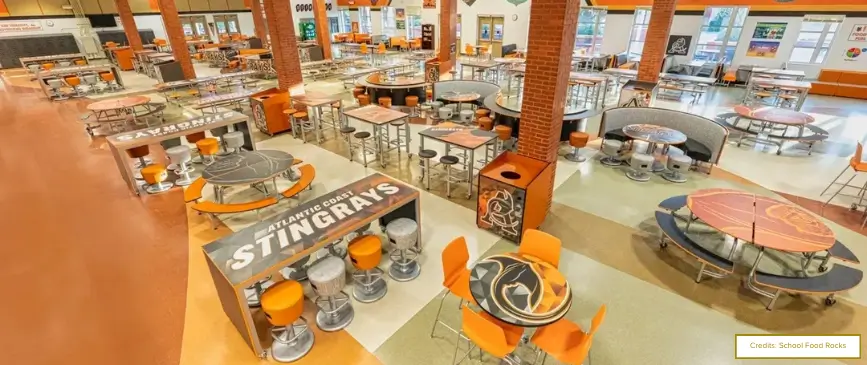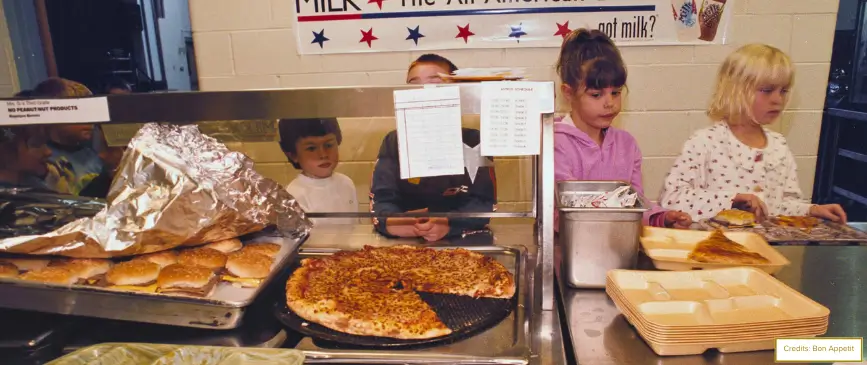Small School Cafeteria Design – Does the Size Define the Experience?
In modern school cafeterias, few places hold more memories than the lunchroom, where students of all ages enjoy a break from academics.
However, the dining experience comes with unique challenges, especially in smaller schools where limited space and resources make mealtime an uphill battle.
As seasoned cafeteria design experts with over 15 years of experience across the U.S., we understand how a well-organized, inviting cafeteria can impact students.
This guide examines the unique hurdles faced by small school cafeterias. It offers creative, tried-and-true solutions to turn lunch into a moment of joy and satisfaction, ensuring that every student walks away with a smile.
Common Challenges in Small School Cafeterias
Managing a small school cafeteria is no easy task; anyone who has worked in or managed one knows this well. With limited space, a bustling student population, and resource constraints, small school cafeterias face distinct challenges affecting everything from student enjoyment to efficiency and the overall student dining experience.
Let’s take a closer look at some of the main challenges faced by smaller cafeterias:
1. Limited Space
One of the biggest challenges in small school cafeterias is space. Many school buildings are older, often built before current enrollment levels were anticipated.
What once worked for smaller student populations now feels cramped, with crowded tables and little room for students to move freely. Limited space leads to issues like overcrowding, which increases wait times and makes it hard for students to find a comfortable spot to eat.
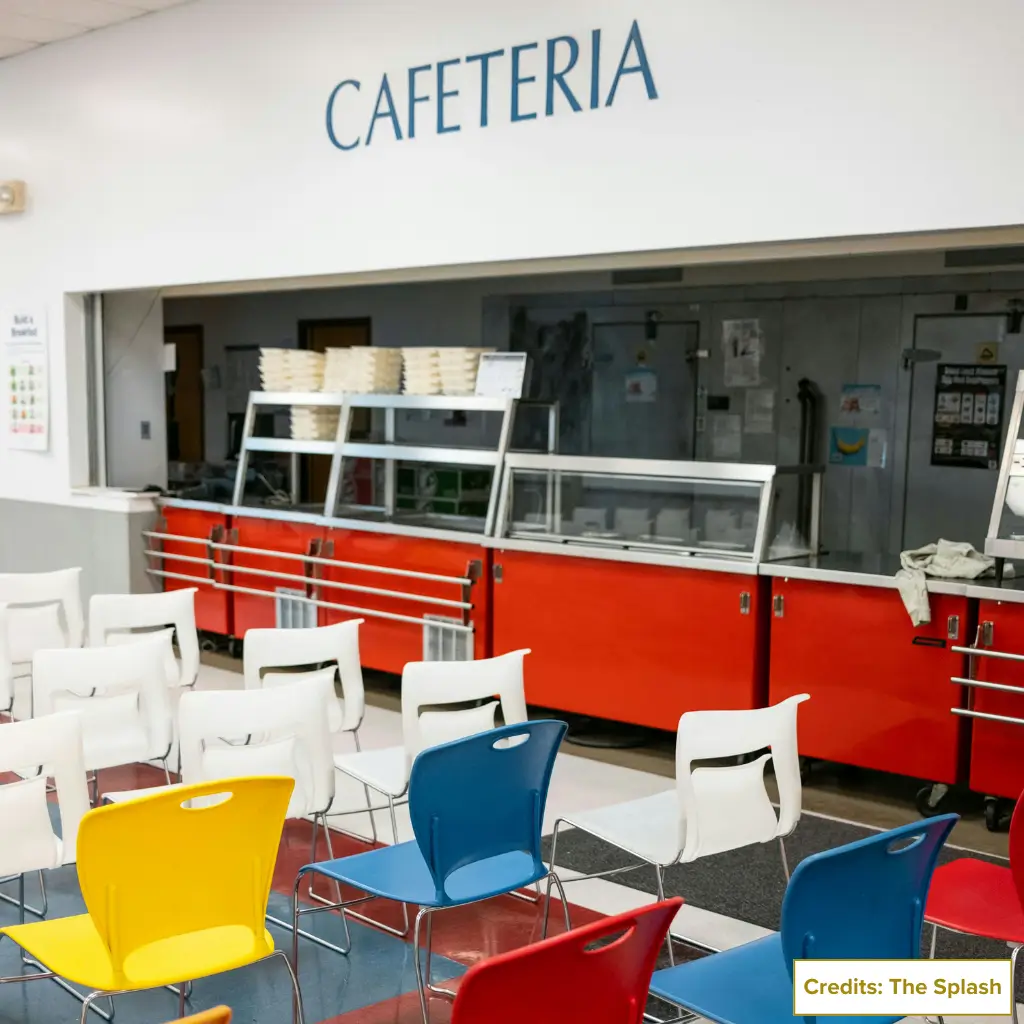
2. Student Flow and Queues
Managing the flow of students is no small feat. Students naturally want to chat, catch up, and sit with friends, leading to groups clustering in lunch lines and around tables. This is especially true at an elementary level, where younger children often don’t know where to go.
This traffic issue delays the entire lunch schedule, cutting time meant for eating and enjoying a break from class.
3. Mess and Cleanliness
Once lunch is over, cafeteria workers are often left to deal with trays, food wrappers, and spills in a confined space. Even a few spills or leftover items can quickly make the space look messy and disorganized in a small cafeteria. This often leads to hygiene concerns and takes up valuable time that could be used to prepare for the next group of students.
4. Multi-Purpose Space Demands
For many schools, the cafeteria doubles as a gym, assembly hall, or space for after-school programs. This dual functionality makes it difficult to maintain a setup specifically tailored for dining, which impacts the cafeteria’s appearance and usability.
For example, moving tables back and forth or adjusting layouts multiple times a day isn’t always feasible, leading to a less-than-ideal experience for students.
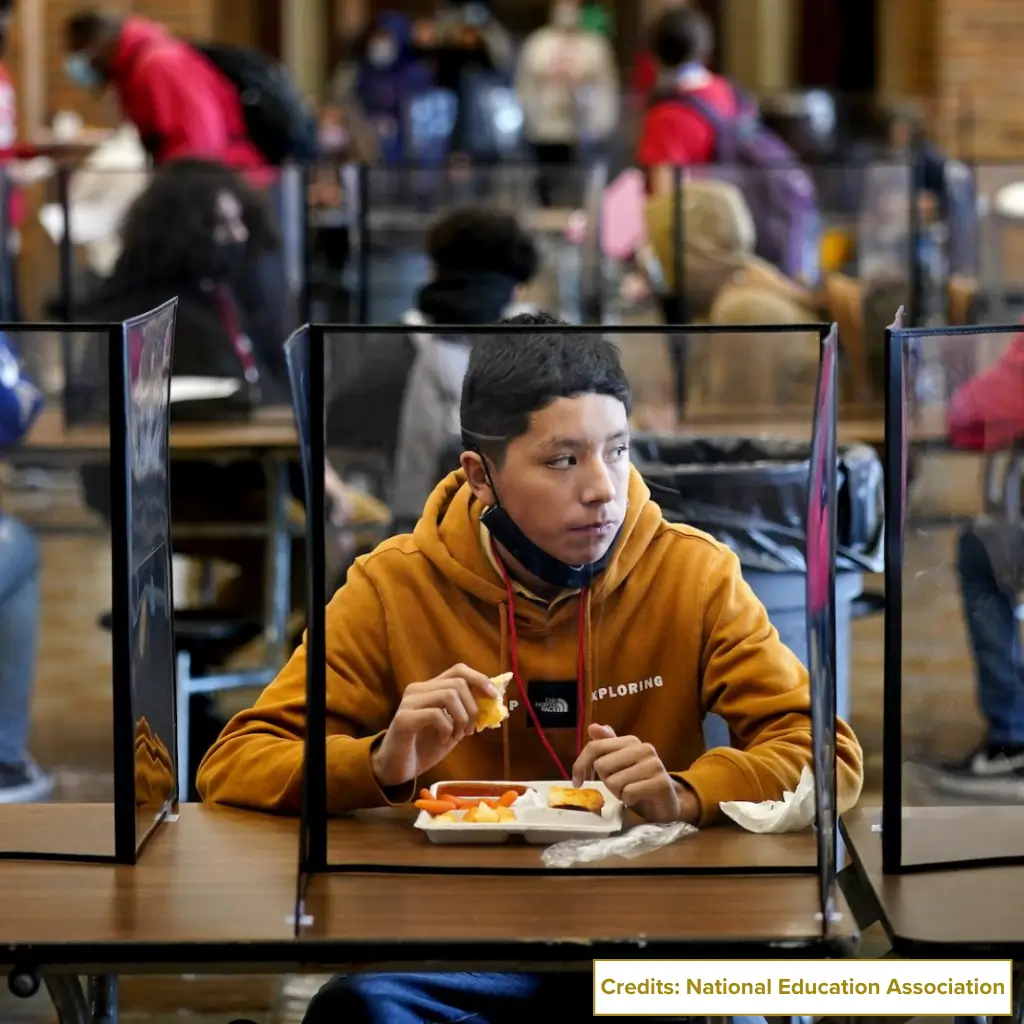
5. Maintaining a Healthy Dining Environment
Due to limited space, the combination of odors, noise, and cleaning demands make the environment less pleasant.
For instance, a busy, crowded middle school cafeteria that doesn’t have proper ventilation or enough seating for everyone leads to a noisy and uncomfortable space that could discourage students from enjoying their meals.
6. Balancing Supply and Demand
Small school cafeterias often run on limited budgets and need to attract as many students as possible to maintain financial viability. However, longstanding stigmas about school lunches, especially in high schools, can reduce participation.
The need to maintain affordable, nutritious options on a tight budget while combating negative perceptions about cafeteria food adds significant strain. This impacts the cafeteria’s bottom line and makes it hard to fund initiatives that promote healthy eating.
7. Ensuring Food Safety and Hygiene
Small cafeterias must prioritize food safety, but with limited space, cross-contamination risks increase. Without proper storage or handling space, maintaining hygiene and protecting students from food allergens becomes challenging, potentially potentially putting students with dietary restrictions at risk.
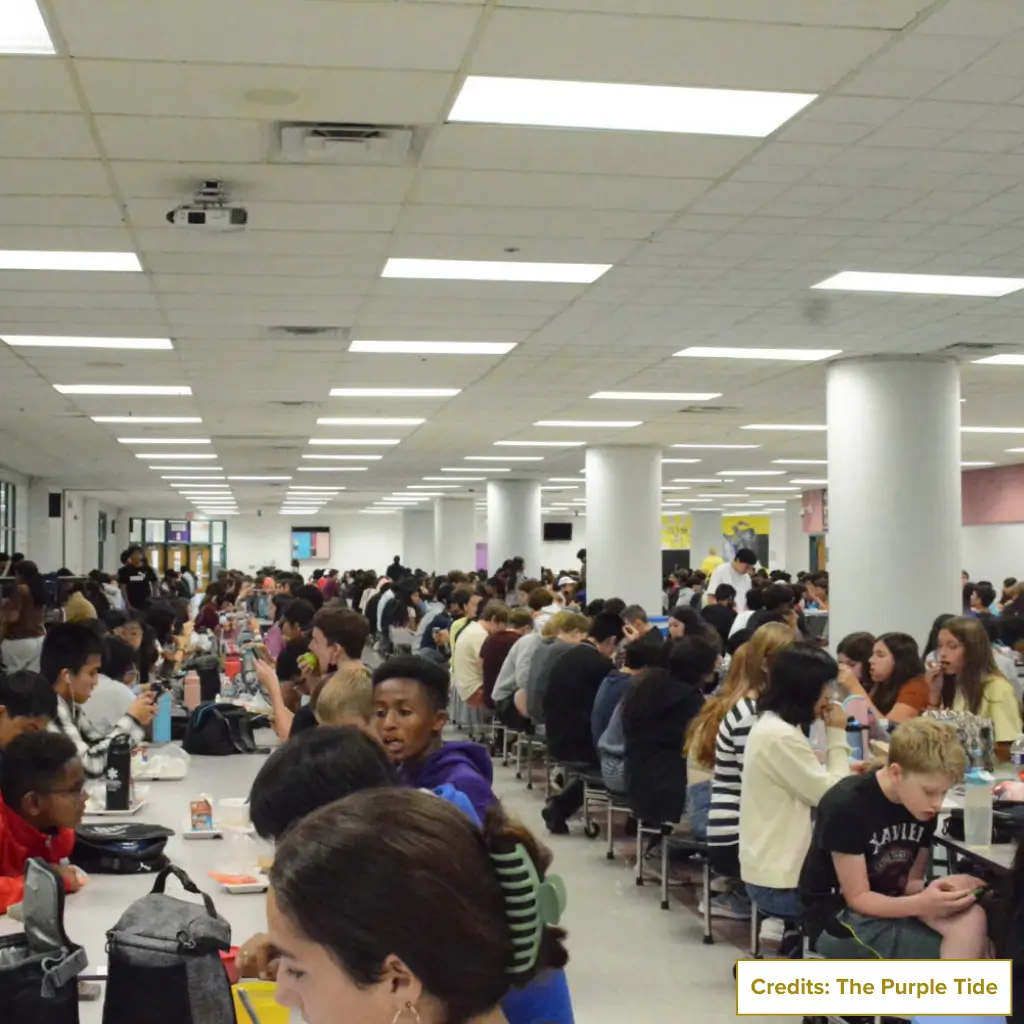
8. Balanced Meals
A small school cafeteria also struggles with limited food preparation space, making offering varied, balanced meals challenging. This outcome leads to repetitive menus, impacting student satisfaction and nutritional value.
9. Staffing Issues
Recruiting qualified staff in smaller schools can be difficult. Staff are often stretched thin, needing to manage food preparation and student supervision.
This leads to burnout and a high turnover rate, impacting overall efficiency and the ability to provide a high-quality meal experience for students.
10. Regulatory Compliance
Staying up-to-date with nutrition and health regulations requires ongoing training and resources, which can strain smaller operations. Compliance with the National School Lunch Program (NSLP) and other health standards is mandatory, but smaller cafeterias may struggle to keep pace with these requirements due to limited resources.
Are you also facing the stress of managing a small cafeteria? We have the solutions to make your space work for you. Connect with us at Ingenious Culinary Concept, and get a customized quote in just 24 hours!
Innovative Solutions for Small Cafeteria Success
Nothing in the world comes without difficulties. With careful planning and smart strategies, you can tackle these obstacles directly. Here are some approaches that small school administrators and cafeteria personnel can implement.
1. Optimize Seating Arrangements and Student Flow
Adjusting seating layouts can go a long way in managing student flow. Using assigned seating, particularly, can help maintain order, streamline movement, and reduce congestion. Likewise, seating options and different types of tables that allow some flexibility, such as benches or movable chairs, make it easier to control traffic and keep lines moving.
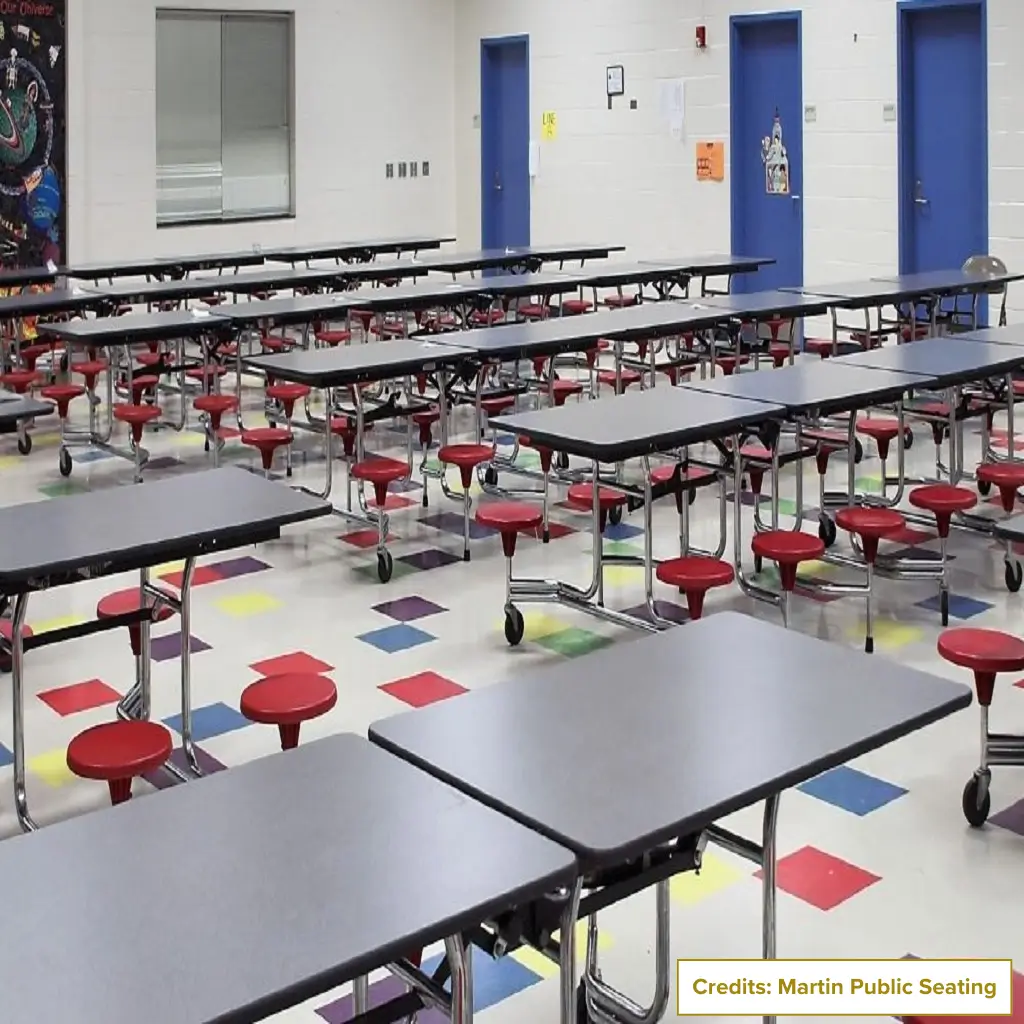
2. Staggered Lunch Periods
Breaking up lunch periods by grade level or assigning time slots helps manage crowds and maintain order. For instance, scheduling 20-minute slots per grade with a buffer period can give staff the time to clear tables and reset for the next group, reducing the likelihood of long queues and improving lunchtimes.
3. Increase Staffing or Assign Specific Roles
If budget allows, consider hiring additional staff to handle peak times. You can assign specific roles to staff, such as one group dedicated to food service and another for cleaning. This division of responsibilities reduces the burden on individual staff members, increases efficiency, and ensures that the cafeteria remains clean and organized.
4. Creative Balanced Menu Options
Offering pre-packaged or grab-and-go meals is a practical way to speed up service in smaller cafeterias. You might consider setting up a “snack station” or a “salad bar” with fresh ingredients and ready-made options that students can easily grab. Incorporating healthy, convenient options for schools participating in the NSLP can encourage participation and help reduce food waste.
5. Engaging Decor and Bulletin Boards
A few decor adjustments can make a big difference even in a small space. Adding colorful posters, banners, or themed decorations on a school cafeteria bulletin board can make the space more inviting. For example, post elementary school cafeteria rules or include cheerful images or inspiring cafeteria quotes to foster a positive atmosphere. Simple, small school cafeteria decorations, like plants or murals, also bring life to the space and make it more enjoyable for students and staff alike.
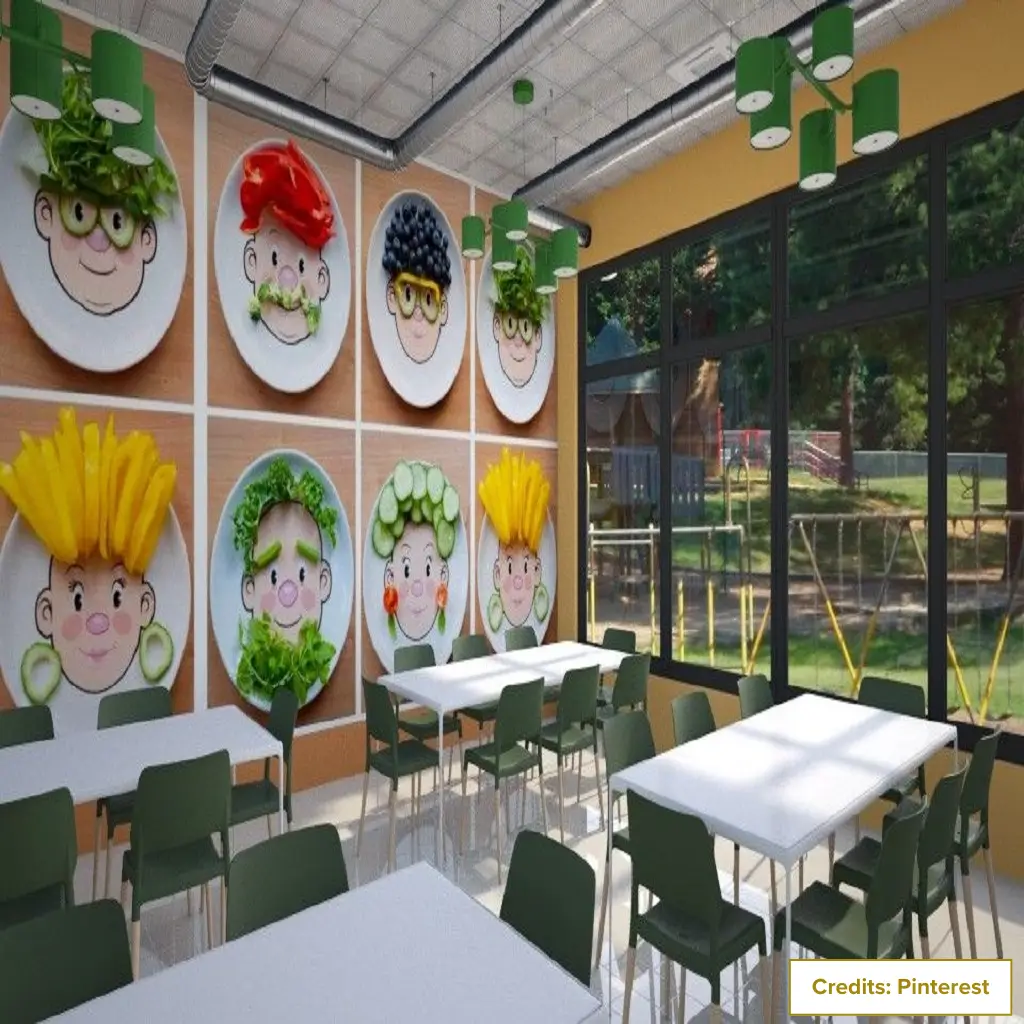
6. Partner with Local Farmers for Affordable Ingredients
To offer the best lunch menu options while keeping costs down, work with local suppliers to source affordable, fresh ingredients. Buying in bulk and using seasonal produce can save money, allowing you to incorporate more nutritious foods into the menu and promote healthy eating habits.
7. Prioritize Food Safety and Allergen Awareness
Given the risks associated with food allergies, small cafeterias should focus on developing clear protocols for handling allergens.
Simple measures, such as color-coded packaging or designated allergy-free zones, help reduce cross-contamination risks and ensure a safe dining experience for all students. Educating staff on these procedures ensures they’re consistently applied.
8. Use Outdoor Space for Extra Seating
If your school has outdoor areas, consider setting up an outdoor school cafeteria on nice days. This creates additional seating options and provides a change of scenery for students, which can help reduce noise and provide a more relaxed environment.
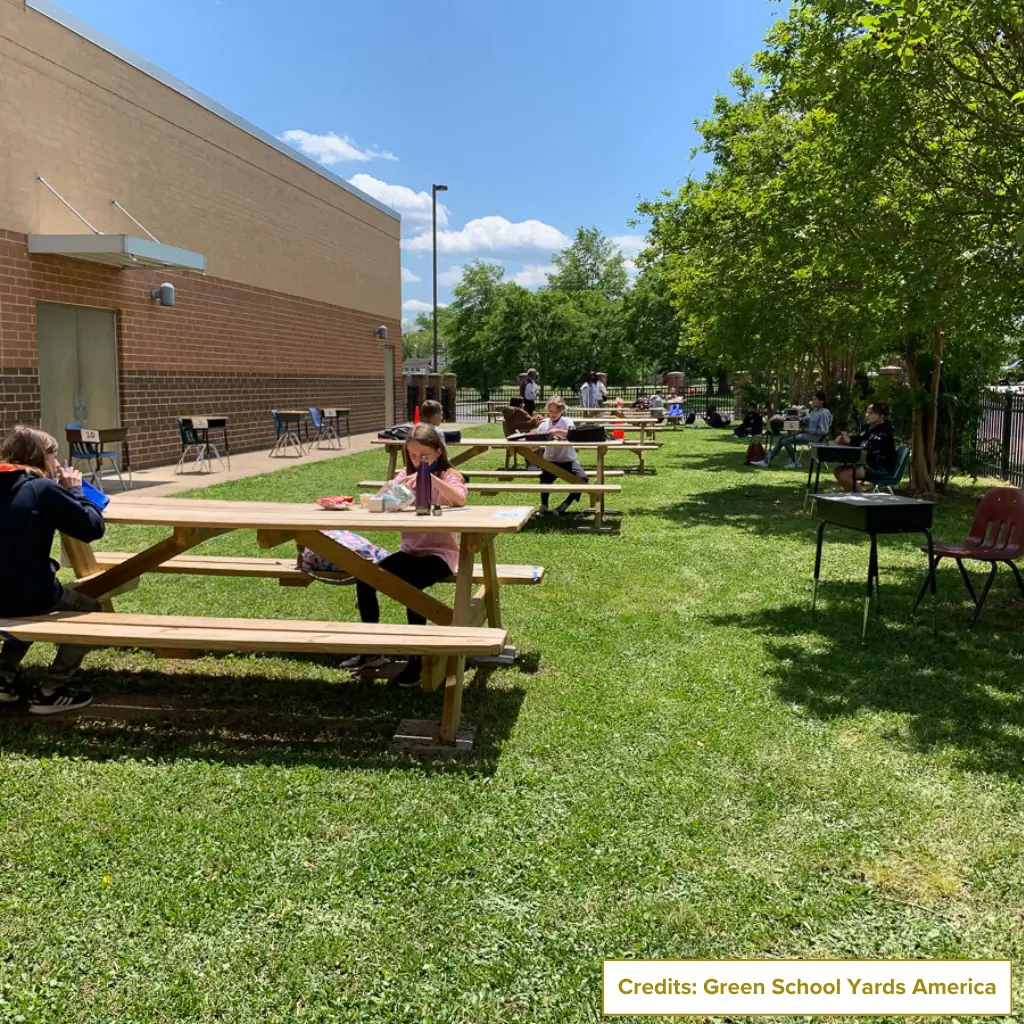
9. Raise Funds for Cafeteria Upgrades
Organizing fundraisers, such as community dinners or cooking competitions, can generate funds for needed improvements. With an extra budget, cafeterias can invest in better equipment, food storage solutions, and seating to enhance the dining experience and operational efficiency.
Conclusion – Making the Most of Your Small School Cafeteria
Running a small school cafeteria comes with unique challenges, but with thoughtful solutions, you can create an efficient, pleasant, and enjoyable environment for students.
By addressing key issues such as space management, cleanliness, and student engagement, you can transform these spaces into hubs of positive school culture. With the right approach, your small school cafeteria can become a place where students are excited to eat, socialize, and enjoy a well-balanced meal every day.
FAQs
How can we effectively manage a small school cafeteria?
To effectively manage a small school cafeteria, design a layout that ensures easy student flow with clear pathways from entry to food stations and flexible seating options to accommodate different group sizes. Cross-train staff to handle multiple roles, fostering a collaborative environment that maximizes efficiency and boosts morale.
What resources are available for small school cafeterias?
Look for support from local school nutrition associations, USDA resources, online training programs or cafeteria renovation experts that provide tools, recipes, and guidelines for effective cafeteria management.
What to consider when designing a small school cafeteria menu?
Focus on simplicity and versatility. Choose meals that can be easily prepared in batches, use common ingredients across multiple dishes, and incorporate seasonal items to keep costs manageable.

